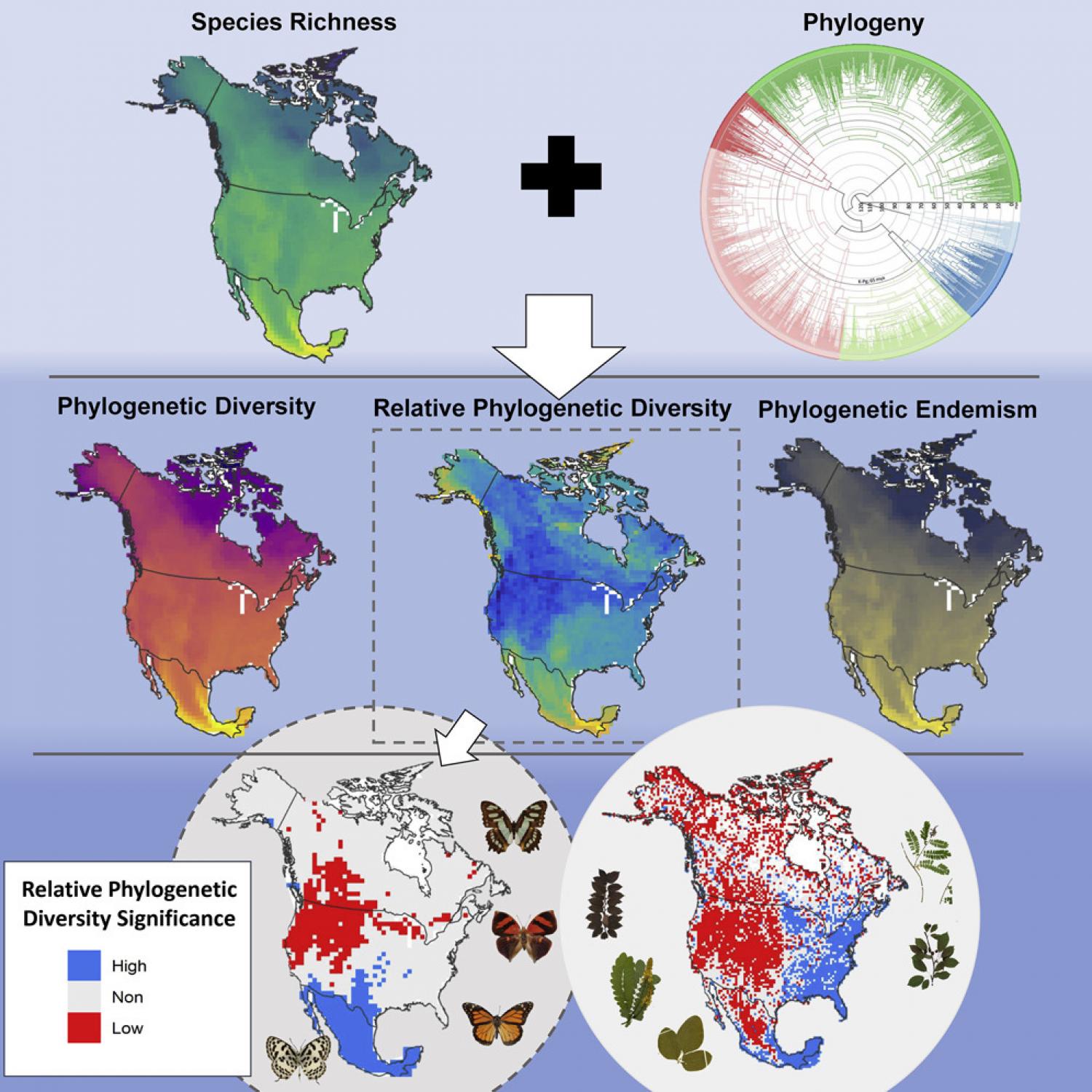
Broad-scale, quantitative assessments of insect biodiversity and the factors shaping it remain particularly poorly explored. Here we undertook a spatial phylogenetic analysis of North American butterflies to test whether climate stability and temperature gradients have shaped their diversity and endemism. We also performed the first quantitative comparisons of spatial phylogenetic patterns between butterflies and flowering plants. We expected concordance between the two groups based on shared historical environmental drivers and presumed strong butterfly-host plant specializations. We instead found that biodiversity patterns in butterflies are strikingly different from flowering plants, especially warm deserts. In particular, butterflies show different patterns of phylogenetic clustering compared with flowering plants, suggesting differences in habitat conservation between the two groups. These results suggest that shared biogeographic histories and trophic associations do not necessarily assure similar diversity outcomes. The work has applied value in conservation planning, documenting warm deserts as a North American butterfly biodiversity hotspot.
